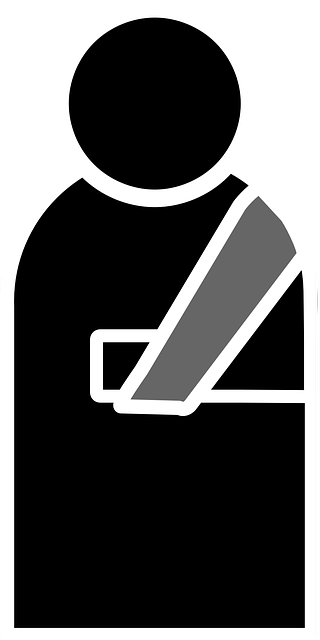Personal injury law addresses physical harm caused by negligence or strict liability, aiming to compensate victims through damages like medical expenses, lost wages, and pain and suffering. This legal domain covers diverse scenarios from car accidents to product liability, emphasizing understanding causation, liability, and available compensations. Effective navigation requires immediate medical attention, documenting harm with evidence, consulting a lawyer, and potential negotiations or litigation to secure just outcomes for all parties involved.
Personal injury law is a vital area of legal practice, ensuring individuals are compensated for harm caused by others. This comprehensive guide delves into the intricacies of personal injury law, offering clarity on key concepts and real-world applications. From defining actionable harms to navigating claims processes, we explore common types of cases and the rights at play. Understanding these aspects is crucial for both victims seeking justice and legal professionals aiding them. Discover the steps towards compensation and familiarize yourself with the responsibilities involved in personal injury law.
- Understanding Personal Injury Law: Key Definitions and Scope
- Common Types of Personal Injury Cases and Claims
- The Process: From Incident to Compensation
- Rights and Responsibilities: What You Need to Know
Understanding Personal Injury Law: Key Definitions and Scope

Personal injury law encompasses a range of legal issues related to physical harm or loss suffered by an individual due to another person’s or entity’s negligence, intentional actions, or strict liability. At its core, this area of law seeks to provide a remedy for victims, ensuring they receive compensation for their injuries and associated damages. Key definitions within personal injury law include negligence, which refers to a failure to exercise reasonable care, and damages, representing the harm or losses incurred.
The scope of personal injury law is broad, covering various scenarios such as car accidents, medical malpractice, slips and falls, product liability, and more. It involves understanding causation, liability, and the types of compensation available, which may include medical expenses, lost wages, pain and suffering, and punitive damages. Effective navigation of personal injury law requires a deep understanding of these fundamentals to ensure just outcomes for all parties involved.
Common Types of Personal Injury Cases and Claims

In the realm of personal injury law, a wide range of cases and claims exist, each with its unique circumstances. Common types include car accidents, where individuals may seek compensation for medical expenses, pain and suffering, and property damage resulting from another driver’s negligence. Another significant area is medical malpractice, involving incidents of misdiagnosis, improper treatment, or hospital-acquired injuries, leading to legal action against healthcare providers.
Additionally, slip and fall accidents are prevalent, particularly in public places like supermarkets, restaurants, or offices, where individuals can sue for damages if they sustain injuries due to hazardous conditions or lack of maintenance. Product liability claims are also common, with consumers seeking redress for injuries caused by defective products, such as pharmaceutical drugs, faulty appliances, or unsafe consumer goods. These cases underscore the importance of understanding one’s rights under personal injury law.
The Process: From Incident to Compensation

After an incident, individuals often find themselves navigating a complex process to obtain compensation for their injuries under personal injury law. The journey typically begins with immediate medical attention and documentation of the harm sustained. This includes gathering evidence such as medical records, police reports, and witness statements, which are crucial in establishing liability and the extent of damages.
Next, individuals may consult with a personal injury lawyer who will assess their case, advise them on legal rights, and guide them through negotiations with insurance companies or defendants. If an agreement cannot be reached, the case may proceed to litigation, where a judge or jury determines liability and awards compensation based on proven damages, such as medical expenses, lost wages, and pain and suffering.
Rights and Responsibilities: What You Need to Know

When it comes to personal injury law, understanding your rights and responsibilities is crucial for navigating this complex legal landscape. If you’ve been involved in an accident or experienced harm due to someone else’s negligence, you have a right to seek compensation and justice under personal injury law. This includes the right to recover damages for medical expenses, lost wages, pain and suffering, and more. However, it’s not just about what you’re entitled to; personal injury law also outlines the responsibilities of individuals and entities involved in an accident.
You have a duty to act with reasonable care to prevent accidents and protect others from harm. This means being mindful of your actions and adhering to safety regulations. Conversely, if another party’s negligence causes harm or damages, they can be held liable under personal injury law. It’s important to be aware of these dual aspects—your rights and responsibilities—to ensure you’re protected, act appropriately, and navigate the legal process effectively when pursuing a personal injury claim.
Personal injury law plays a vital role in safeguarding individuals’ rights and ensuring they receive fair compensation after an accident or harm. By understanding key definitions, common case types, and the claims process, victims can navigate their legal options effectively. Awareness of one’s rights and responsibilities is empowering, enabling folks to make informed decisions and seek the justice they deserve within the realm of personal injury law.
